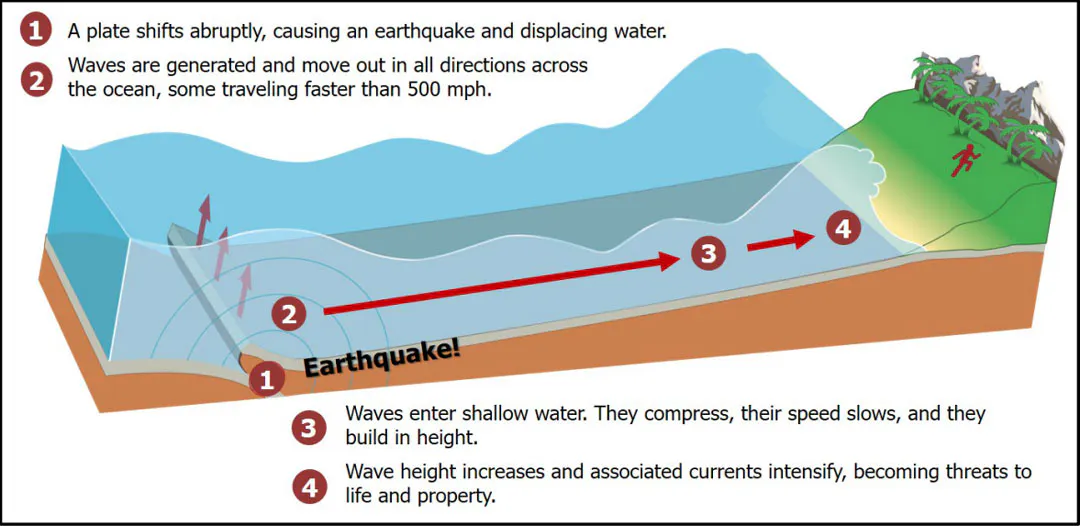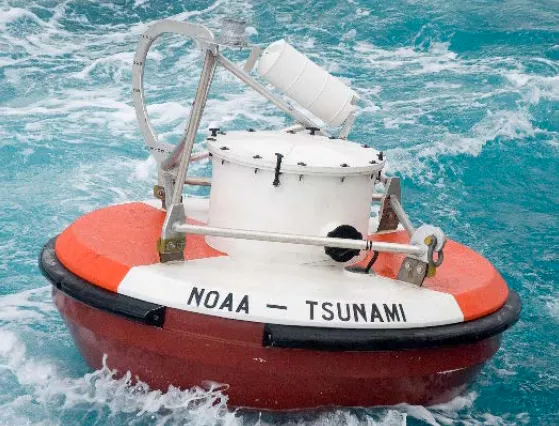Understanding Tsunamis: How These Powerful Waves Form And Impact Coasts
A 7.0 earthquake near California prompted a tsunami warning on Thursday, which was later lifted. Meteorologist Alan Crone explains what a tsunami is and how it occurs.Friday, December 6th 2024, 8:50 am
A magnitude 7.0 earthquake struck off the coast of northern California on Thursday at 10:44 a.m. PST, just offshore of Cape Mendocino.
Shortly after the earthquake, a tsunami warning was issued. Although the quake raised concerns about the potential for a tsunami, no tsunami was detected, and the warning was lifted soon after.
What Is A Tsunami?
A tsunami is caused by the vertical displacement of water resulting from a seismic event near or beneath the ocean floor. This displacement generates waves, often resembling fast-rising tides with strong onshore currents.
The seismic activity creates waves at the ocean's surface that travel outward in all directions from the source.
 Image Provided By: NOAA/NWS
Image Provided By: NOAA/NWS
While not all large earthquakes trigger tsunamis, an earthquake of this magnitude increases the risk. Factors such as the quake's size, depth, and proximity to the coastline are used to determine the likelihood of a tsunami.
Tsunami waves can cross entire ocean basins at speeds of 400 to 500 mph in deep water. Vessels at sea often do not notice these waves as they pass beneath them. However, as tsunamis approach coastal areas, they become more pronounced and dangerous, sometimes causing water to retreat from shorelines before surging back with devastating force.
Tsunami Detection and Impact
Although seismic events cannot be predicted, tsunamis can be detected afterward. Detection systems use deep-sea buoys and surface measurements to monitor water movement and identify rapid changes that signal a potential tsunami.
 Image Provided By: NOAA
Image Provided By: NOAA
Global tsunami warning centers analyze this data and issue alerts when necessary. These systems have proven critical in providing timely warnings and mitigating the impact of tsunamis.
Significant tsunamis can cause widespread devastation. One of the deadliest tsunamis in recent history occurred on Dec. 26, 2004, after a magnitude 9.1 earthquake. That tsunami killed more than 230,000 people across 14 countries bordering the Indian Ocean.
More Like This
December 6th, 2024
September 11th, 2024
July 5th, 2024
Top Headlines
January 7th, 2025
January 7th, 2025
January 7th, 2025












